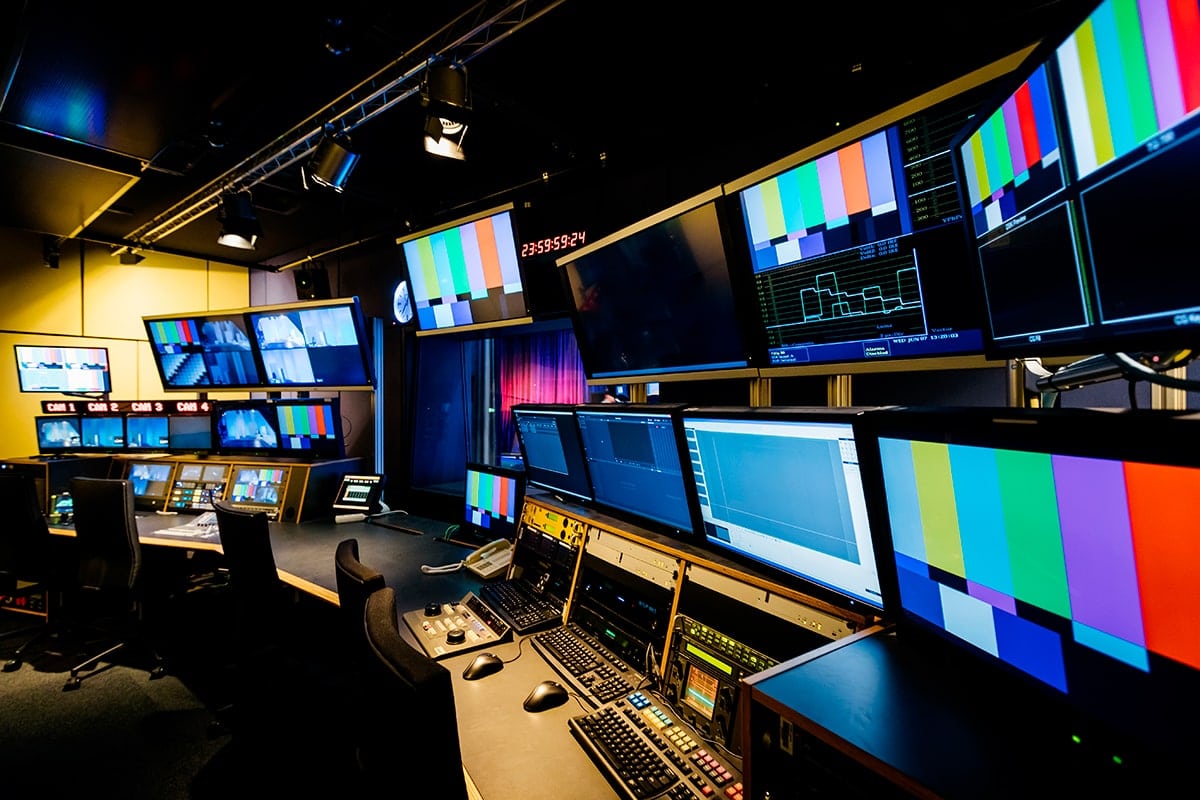
On the 24th June, the UK government took the first steps towards releasing lockdown, a step towards normality, you may say. But it was made quite clear by Chris Whitty the Chief Medical Officer that this would be a new normal, and one we’d be in for some time.
There’s an expectation that all businesses should ‘do their bit’ to contain the virus and part of that is maintaining social distancing in the workplace as we return to full pace and a new normal.
Distancing in the workplace is hard for any business but especially so in the broadcast space. We are made up of close knit teams that share systems, share resources and share desks. We’ve spent a good proportion of the last few decades trying to bring people closer together, not keep them apart.
Some of this is necessitated by the work we do and the way we do it, some by the technology we use. Having the finance team weekly meeting on Zoom is one thing, but ‘remoting back’ a monitoring wall full of 4k feeds and that light for the UPS that still uses a traditional mains voltage GPI is another challenge altogether!
While challenges might exist, (and it may be a lot easier to claim it’s too complex and just can’t be achieved), it is the duty of our industry to try to find a way. Whilst in the last few months there have been well advertised test cases of remote working in broadcast, the challenge now is to make the solutions sustainable.
On a broad scale there are three core options to distance teams, balancing use of technology and reliability with movement of teams. All of these options do however, require one key element: open lines of communication. The majority of facilities will have an existing talkback system that can be scaled up using ipad/iphone clients or additional hardware terminals, those without these facilities will need to utilise office based systems, WhatsApp groups, and the traditional old conference call.
The majority of our broadcast centres are co-located with our (now largely) empty offices. Office based teams working from home was a quick win and successfully accomplished early in the crisis for most of us. As a result, workplace offices may now seem redundant, however they can easily and quickly be repurposed to give operational teams more space.
These offices are already interconnected with existing systems, generally have solid reliable power supplies and welfare facilities to support significant amounts of well spaced people.
In relatively quick time and without too much cost businesses can extend out MCRs and control rooms into these spaces, allowing business critical services to continue while still curtailing the virus. This option requires no special equipment or expertise. All that’s needed is space.
Spacing out people in existing buildings goes a long way, but still leaves employers with challenges when management are asking their most critical employees to travel into sites, often on public transport, especially the case for London sites that have little or no parking.
If your existing building doesn’t have the space for your operational teams or you want to get out of busy areas, consider making use of other buildings that may provide easy access.
This might involve re-facilitating some of your existing buildings, e.g. disaster recovery sites or storage spaces or taking short term lets on available space.
To make the move quick and simple, connectivity is key as you’ll need to be able to easily transport video and data signals between the sites.
This option, perhaps the most transformational, enables the highest degree of social distancing for employees, by keeping them isolated at home. However, it brings with it some of the biggest challenges, both technically and operationally.
Typically this is achieved using the same technology as for inter-building solutions but requiring some more advanced techniques to account for limited home broadband connections and the security implications of an employee’s home.
Many organisations have started doing this with their office workers and some of their operational teams. The next step is to increase the options for 24×7 desks and increase the functionality and resilience of those already at home.
Many of the challenges can be overcome with a little thought and preparation. In many ways, running services at home is no different to centralised control rooms, including being prepared for the unexpected! However, there are some key differences that need to be addressed
Everyone knows that employee engagement and service excellence are essential ingredients of success for broadcast and media companies. By giving control room staff the essential tools and a safe working environment, companies can empower employees to do a great job and facilitate a new model of “remotely enabled” service excellence. This has to be the right way forward for broadcast and media companies around the world.
For more information on how The Hawk Media Partnership can help you implement a remote master control room, please email us at connect@HawkMediaPartnership.com
Sign up to receive updates on how we’re transforming capabilities in broadcast and media